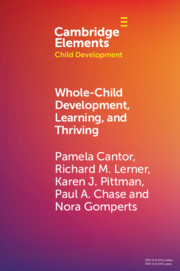Element contents
Whole-Child Development, Learning, and Thriving
Published online by Cambridge University Press: 30 April 2021
Summary
- Type
- Element
- Information
- Series: Elements in Child DevelopmentOnline ISBN: 9781108954600Publisher: Cambridge University PressPrint publication: 20 May 2021



